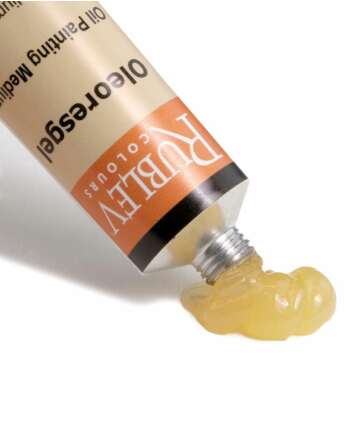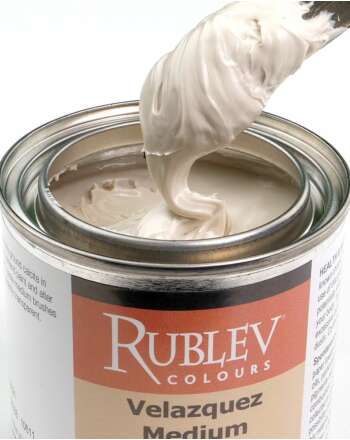Painting Mediums and Grounds
What are painting mediums?
Painting mediums alter the functional properties of paint. Mediums often contain ingredients not found in artists’ colors, such as solvents, oils, waxes, resins, extender pigments, and other substances that are used to change the consistency of paint. These mediums change the handling properties of paint, such as flow out and leveling; increase or decrease tackiness and drag; hasten or retard drying time, increase or decrease gloss, increase transparency, or other characteristics.
What is a ground for painting?
The ground is the layer used to prepare a support for painting; its color and tone can affect the chromatic and tonal values of the paint layers applied over it. The ground is the first layer of paint applied to a support. It is an undercoat, which can either be covered entirely by subsequent paint layers or left visible in the final artwork. In traditional painting, when the support is a wood panel, the ground is usually made of gesso or chalk bound with animal glue, but when the support is canvas, the ground is usually made of underlying paint layers.
Why do painters use grounds or primers?
Using a ground or primer has several practical advantages and some important aesthetic ones. Grounds serve several functional purposes: They compensate for the uneven absorbency of a wooden, fabric, or paper support. They are opaque to obscure the surface underneath. They help to make paint application easier and more consistent. They also serve critical aesthetic functions: They can be toned or pigmented to provide specific desired aesthetic effects. Grounds also affect the color and tonal values of the final painting.
Art Material Advisor on Oil Painting Mediums
The Best Mediums for Glazes are Paste Mediums. Here's Why.
In this episode of the Art Materials Advisor, Tatiana Zaytseva, Natural Pigments cofounder, shows how paste mediums can extend your paint and create glazes and impastos. Learn how these mediums can greatly improve your painting technique, how to incorporate them into your painting, and the best type to use for your painting practice.
Finding Your Happy Medium
In this episode of the Art Materials Advisor, Tatiana Zaytseva, Natural Pigments cofounder, reviews Rublev Colours Oil Painting Mediums. Learn how these mediums can greatly improve your painting technique, how to incorporate them into your painting, and which ones to use for your painting practice.
Learn More About Painting Mediums and Grounds
This guide examines oil painting mediums made by Natural Pigments. These paint mediums are designed to alter the consistency of oil paint in novel ways, different from the varnishes that were in common use since the nineteenth century and alkyd mediums today. Painting mediums change the handling properties of paint, such as flow out and leveling; increase or decrease tackiness and drag; hasten or retard drying time, increase or decrease gloss; increase transparency, and other physical properties of oil paint...
To start painting in Ceracolors colors, you only need paint and water. It handles basically like watercolors or gouache. But for nearly endless possibilities in texture, transparency, viscosity, and sheen, take a look at the wide world of mediums. Think of Ceracolors mediums like paint without the pigment. They're made of the same waxy stuff and can be added to any color in any quantity...
Resins-based paint mediums consist of resin, such as dammar or mastic, dissolved in a solvent and combined with oil used in megilp, Maroger, and other popular oil painting mediums. Oleoresimus mediums became popular in the nineteenth century. This article examines the advantages, if any, and problems associated with using oleoresinous mediums in oil painting...
Featured Oil Painting Mediums
Would you like us to redirect you to our store in USA?












